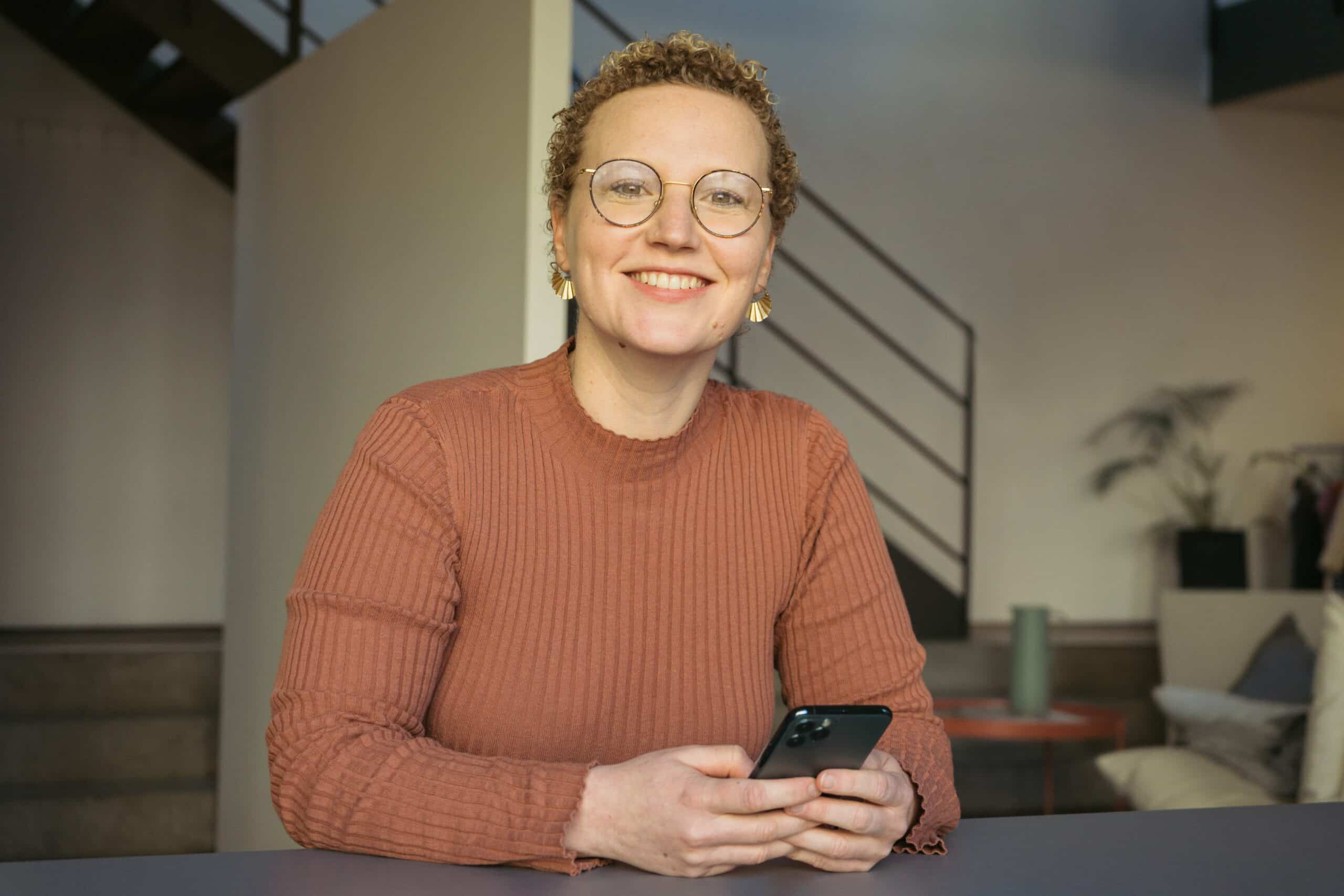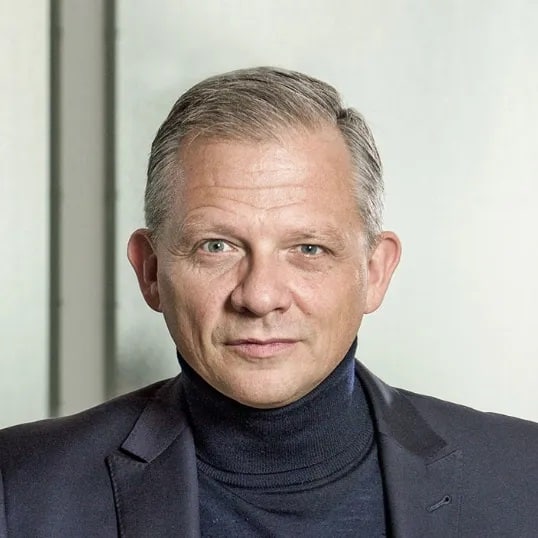The significance of financial education

Hello Christian, what exactly is financial education? And why do you think it’s so important for young people to be financially literate?
In our context, this broad term implies that everyone is surrounded by finance at every stage of their life and needs to know how to navigate this environment. We focus very strongly on basic financial education. Our target group is between 14 and 18 years old.
To give you an idea of what we’re talking about: our average user is 16 and wants to buy a PlayStation 5. Period. This is a reality of life for teenagers now. It’s a wish they want to fulfill now, a financial goal that they pursue before they want to deal with old-age provision.
These short- and medium-term goals serve as incentives for acquiring essential skills that will benefit them throughout their lives. We offer specific guidance on securing vacation jobs, understanding job applications, demystifying taxes, exploring ways to fund their education, and eventually renting their own homes. Our primary objective is to empower young individuals to become financially responsible and, above all, self-reliant adults.
We focus on the practical aspects of money, covering topics like securities accounts and portfolio management. Ultimately, our educational mission revolves around teaching responsible money management. This is what we mean by financial education.
What are some other reasons why financial education is so important, especially for young people, and when should you start?
First of all, financial education is important for everyone. Our mission statement does not imply that everyone needs to live on luxury yachts off the coast of Monaco. Nor does it imply that we prepare them for such a situation. People are very individual in how they want to live. Regardless of my life outlook, I firmly believe that in a system where money plays a central role in everyday life, a more competent handling of finances increases the likelihood of achieving what I want to achieve in life.
As for timing, there’s no universally right moment to start learning about money. I would simply integrate it into everyday life whenever possible. But from a scientific perspective, age seven is significant, because that’s when children start to understand concepts like quantity and size, and it’s a good age to explore topics like “What is money?” or “What is a sense of value?”. My suggestion is to begin as early as possible, without making it into something too special. Instead, it should be approached in a straightforward and realistic manner.
Financial education in Germany: status quo
What’s the current state of financial education in Germany, and how does the Finstep app help young people?
I believe we still have a lot of work to do when it comes to financial education. By global standards, Germany has not exactly blazed a trail of glory in this area, and studies reveal that a staggering 93 % of young people explicitly express a desire for more financial literacy to better prepare them for the future. And we’ll always have room to improve because our world is constantly changing.
Three decades ago, young people needed a completely different level of financial knowledge than they do today. And we can’t even imagine what they might need in 10 or 20 years’ time. Staying abreast of the ever-new circumstances is no small feat, and that’s certainly one of the reasons why we’re always lagging behind.
Financial education is life preparation. Addressing the lack of financial literacy is a societal problem – one that we as a society must collectively address. For our part, we offer an app that covers fundamental financial literacy in both theory and practice. Through animated short videos, we delve into topics like “How do I finance my education?” or “How do I get my first apartment?”. Small games and rewards keep users engaged. We also offer practical tools with which our users can monitor their spending habits.
Financial institutions can customize and extend this application for their customers, thereby strengthening the customer relationship. After all, true financial literacy starts not with high-stakes stock trading but with that first bank account. Knowing what to utilize, how to do so effectively, and what pitfalls to avoid is half the battle.
Gamification to impart knowledge to Finstep’s target group
Who is your app targeted at and how do you make sure the app is a safe space for them?
We’re focusing on 14- to 18-year-olds. Nevertheless, we deliberately avoid gatekeeping. Anyone who seeks to expand their financial knowledge and feels drawn to our app is welcome! Age and financial background play no role, which is why our learning resources are freely accessible. Remarkably, approximately 15,000 users have already demonstrated that affiliation with a specific bank is unnecessary. In fact, you don’t even need to create a user account! Our app truly embraces inclusivity – it’s open to everyone.
When it comes to imparting knowledge, we adopt a “big siblings” approach, recognizing our responsibility toward our users. We don’t push opinions, we provide neutral, comprehensive information. Our goal is to empower our users to make informed, independent decisions, free from undue reliance on our guidance.
How and why do you use gamification to impart knowledge?
As previously mentioned, young people recognize the significance of financial education for achieving their goals. However, in the long term, as we probably all know, merely imparting knowledge isn’t sufficient to maintain people’s focus. We often overlook that our actions aren’t guided by pure, rational calculation. Sometimes, they’re simply driven by positive emotions, experiences, and quick success or rewards. This explains why language learning apps like Duolingo use gamification because the resulting reward effect is extremely helpful in maintaining motivation, especially when things become a little more challenging or when everyday distractions start to get in the way.
We make use of various elements of gamification. The goal is to accumulate short-term rewards and nurture long-term prospects. Users can earn points after each lesson, which they can redeem within the app or even in real life. Daily engagement unlocks additional rewards and much more. Banks can harness this gamification engine to make their benefits programs more engaging or easily set up new ones with us, thereby offering additional value to their customers.
Finstep’s USP
Aren’t there other players in the financial education sector? What sets you apart from your competitors?
We know we’re not reinventing the wheel, and that’s a good thing! In my opinion, the magnitude of the issue demands collective effort, shared across multiple shoulders. Our approach, therefore, combines established strengths, such as gamification from the learning sector and trustworthiness from the financial realm, into a distinctive product.
What sets us apart from our competition is our clear focus on financial education in a secure environment, our unique access to young people and our approach of bringing them into a dialog with their main bank, while we remain independent of banks.
Can your app be combined with traditional banking offers, for example by integrating personal accounts or savings plans?
At first glance, we empower banks to provide digital, target group-oriented offers with just a few clicks. Banks tailor the app to their customers, enhancing it with additional courses, notifications, promotions or personalized rewards. The app complements the banks’ existing offerings, allowing them to increase the added value they provide to young people. This fosters a stronger customer relationship, which can be further developed over time. Currently, there’s no direct link between the offered products and services. However, we have some ideas about how we might be able to change that.
BankingHub-Newsletter
Analyses, articles and interviews about trends & innovation in banking delivered right to your inbox every 2-3 weeks
"(Required)" indicates required fields
Challenges for financial institutions in dealing with young people
What are traditional financial institutions already doing to promote financial education among young people and where do you see potential for improvement?
From my experience, imparting financial literacy has always been an issue or even a matter of the heart for banks, especially regional institutions. Yet, the approach varies significantly from one bank to another. Initiatives such as school visits and World Savings Day serve as effective entry points, acquainting young individuals with financial concepts. But how does knowledge transfer work? It requires authentic interaction between the bank and young people, as well as genuine customer relationships.
The younger generations generally have little or no contact with their banks, which in turn often find it difficult to strike the right chord. The deficiency in this regard becomes evident when considering that many young people view banks merely as accounts – interchangeable tools for storing and spending money.
Furthermore, staying up-to-date remains an ongoing challenge. The content itself and recipient demographics evolve incessantly. A few years ago, there was no need to explain microtransactions, and also young people wanted to be addressed differently. This trend is likely to shift once more in the coming years. Some institutions find it overwhelming to stay current.
What do you think banks should change when addressing young people?
One aspect is that people today are more likely to connect to personal brands than to institutional ones. Consequently, a personal approach is extremely important for all customers – but it must be executed thoughtfully! No one wants to feel patronized as a customer, especially young individuals. It’s also sometimes too easy to forget how far young people have already come. There are still a few developmental steps ahead, it’s vital not to mistake “almost grown up” for “still a child”. You also don’t have to be a slang expert to advertise your offerings. Ultimately, young people are, above all, individuals – people with whom you can engage.
This also makes it much easier to find common ground, as forced pretense or trying too hard to align rarely resonates well. Young customers recognize that we don’t speak their exact language, nor have we been adolescents ourselves for quite some time. It’s not a big deal for them as long as they feel that we’re taking them seriously. If you manage to get this right, you have actually already found the key.
Moreover, we shouldn’t underestimate digitalization. The younger generation is so used to everything working with just a few clicks or at the touch of a button. They don’t exactly want to trek around the world to open a savings account, for instance.
Finstep’s plans for the future
What is your vision for Finstep in the next 10 years?
Ten years is a long time! Our primary objective is to assist our users in reaching their life goals and becoming financially independent. Hence, we aim to provide additional services, such as liquidity planning, to give you a more concrete idea.
I’m particularly intrigued by concepts like a life stage simulator, enabling users to simulate financial planning based on different life phases, for example: What if I work at this salary for another x years? What if I get EUR 50 for my birthday? What would I have to do without for how long if I took out loan Y? And much more! And of course: keep on striking the right balance between end customer experience and cooperation with our banking partners.



